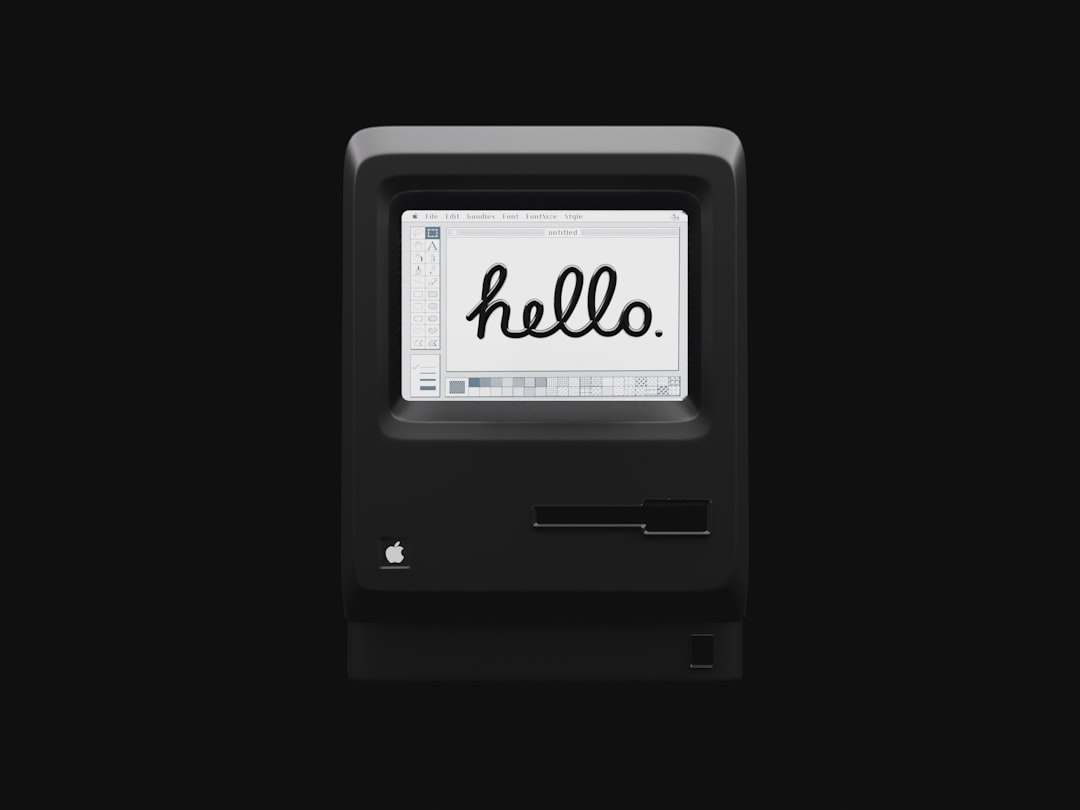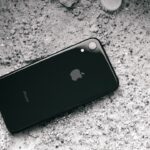In the digital age, smartphones have become indispensable tools for communication, productivity, and entertainment. Among these devices, the iPhone stands out for its user-friendly interface and extensive app ecosystem. However, as users download more applications, the home screen can quickly become cluttered, making it challenging to find the tools needed for daily tasks.
Effective app organization is essential not only for enhancing user experience but also for improving efficiency and productivity. By implementing a systematic approach to app organization, iPhone users can streamline their digital lives, ensuring that their most-used applications are easily accessible while minimizing distractions from less relevant ones. The process of organizing apps on an iPhone involves several strategies that cater to individual preferences and usage patterns.
From assessing app needs to utilizing built-in features like the App Library, users can create a personalized layout that reflects their habits and priorities. This article will delve into various methods for organizing apps on an iPhone, providing practical tips and insights that can help users maintain a tidy and efficient home screen. By understanding the importance of app organization and employing effective strategies, users can transform their iPhone experience into a more enjoyable and productive one.
Key Takeaways
- Assess your app needs and usage to determine the best organization method for your iPhone apps.
- Categorize your apps for easy access by grouping similar apps together in folders.
- Customize your home screen layout to prioritize the apps you use most frequently.
- Utilize search and Siri suggestions for quick access to apps you use less often.
- Regularly delete unused and redundant apps to maintain a tidy app layout and make use of the App Library for quick access to all your apps.
Assessing Your App Needs and Usage
Before diving into the organization process, it is crucial to assess your app needs and usage patterns. This step involves reflecting on which applications you use most frequently and which ones have become obsolete or redundant. Start by reviewing your current app collection; take note of the apps that you access daily versus those that you rarely open.
This evaluation can reveal insights into your digital habits and help you identify areas for improvement. For instance, if you find that certain social media apps are consuming a significant portion of your time without adding value, it may be time to reconsider their placement or even their necessity. Additionally, consider the purpose of each app in your daily routine.
Are there specific tasks that require particular applications? For example, if you frequently use productivity tools like note-taking apps or task managers, it may be beneficial to prioritize their accessibility on your home screen. Conversely, entertainment apps that you use sporadically might not need to occupy prime real estate on your device.
By understanding your app usage patterns, you can make informed decisions about how to categorize and organize your applications effectively.
Categorizing Your Apps for Easy Access

Once you have assessed your app needs, the next step is to categorize your apps for easy access. Categorization involves grouping similar applications together based on their functions or purposes. This method not only simplifies navigation but also enhances the overall user experience by reducing the time spent searching for specific apps.
Common categories include social media, productivity, entertainment, finance, health, and utilities. By creating distinct categories, you can quickly locate the apps you need without sifting through a disorganized array of icons. For example, if you frequently use multiple social media platforms such as Instagram, Facebook, and Twitter, placing them in a dedicated folder labeled “Social” can streamline your access to these applications.
Similarly, if you rely on various productivity tools like calendar apps, note-taking software, and task managers, grouping them under a “Productivity” folder can help you stay organized and focused on your tasks. This categorization not only aids in quick access but also allows users to visualize their app landscape more clearly.
Creating Folders for Similar Apps
| Folder Name | Number of Apps | Organizational Benefit |
|---|---|---|
| Social Media | 5 | Easy access to all social apps |
| Productivity | 8 | Improved time management |
| Entertainment | 3 | Quick access to entertainment apps |
Creating folders is a practical way to further enhance app organization on your iPhone. Folders allow users to group similar applications together within a single icon, reducing clutter on the home screen while maintaining easy access to frequently used apps. To create a folder, simply press and hold an app icon until it begins to jiggle, then drag it over another app that you wish to group it with.
The iPhone will automatically create a folder containing both applications, which you can then rename according to the category it represents. For instance, if you have several travel-related apps such as flight trackers, hotel booking services, and navigation tools, consider creating a folder titled “Travel.” This not only keeps your home screen organized but also allows you to quickly access all travel-related resources in one place. Additionally, folders can be customized with unique names that resonate with your personal preferences or usage habits.
By taking advantage of this feature, users can create a more streamlined and efficient app organization system tailored to their specific needs.
Customizing Your Home Screen Layout
Customizing your home screen layout is another essential aspect of effective app organization. The iPhone allows users to rearrange app icons freely, enabling them to prioritize frequently used applications by placing them in prominent positions on the home screen. Consider placing your most essential apps—such as messaging platforms or navigation tools—on the first page of your home screen for immediate access.
This strategic placement minimizes the time spent searching for critical applications during busy moments.
Moreover, users can take advantage of the iPhone’s widget feature to further enhance their home screen layout. Widgets provide at-a-glance information from apps without needing to open them fully.For example, a weather widget can display current conditions directly on the home screen, while a calendar widget can show upcoming events. By incorporating widgets alongside app icons, users can create a visually appealing and functional layout that caters to their daily needs.
Utilizing Search and Siri Suggestions

In addition to manual organization methods, iPhone users can leverage built-in features like Search and Siri Suggestions to enhance app accessibility. The Search function allows users to quickly locate any app by swiping down on the home screen and typing in the app’s name. This feature is particularly useful for those who may have numerous applications installed but do not want to spend time scrolling through multiple pages or folders.
Siri Suggestions further streamline this process by intelligently recommending apps based on usage patterns and time of day. For instance, if you typically open a specific fitness app in the morning or a news app during your commute, Siri may suggest these applications at relevant times without any input from you. By utilizing these features effectively, users can maintain an organized home screen while still enjoying quick access to their most-used applications.
Deleting Unused and Redundant Apps
A crucial step in maintaining an organized iPhone is regularly deleting unused and redundant apps. Over time, users may accumulate applications that no longer serve a purpose or have been replaced by more efficient alternatives. Taking the time to review your app collection periodically can help identify these unnecessary applications.
To delete an app, simply press and hold its icon until options appear, then select “Remove App” followed by “Delete App.” This action not only frees up storage space but also contributes to a cleaner home screen layout. Additionally, consider evaluating subscription-based apps that may no longer be relevant or beneficial. Many users subscribe to services that they eventually forget about or find less useful over time.
By canceling these subscriptions and removing the associated apps from your device, you can further streamline your digital experience while saving money in the process.
Using App Library for Quick Access
The App Library is a feature introduced in iOS 14 that provides an automatic organization system for all installed applications on an iPhone. Located at the end of the home screen pages, the App Library categorizes apps into predefined groups such as Social, Productivity, Entertainment, and more. This feature allows users to quickly locate any application without having to manually organize them into folders or pages.
To access the App Library, simply swipe left past all your home screen pages until you reach the last page where it resides. From there, you can either browse through the categories or use the search bar at the top to find specific apps quickly. The App Library is particularly beneficial for users who prefer minimalism on their home screens but still want easy access to all their applications without cluttering their primary interface.
Organizing Apps by Frequency of Use
Another effective strategy for organizing apps is arranging them based on frequency of use. This method involves placing the most frequently accessed applications in easily reachable locations while relegating less-used apps to secondary pages or folders. By prioritizing accessibility for essential tools—such as messaging apps or productivity software—users can enhance their efficiency during daily tasks.
To implement this strategy effectively, start by identifying which apps you use daily versus those that are accessed less frequently. Once identified, place high-usage apps on the first page of your home screen or within easy reach in folders labeled accordingly. This approach not only saves time but also reduces frustration when trying to locate essential tools amidst a sea of less relevant applications.
Tips for Maintaining a Tidy App Layout
Maintaining a tidy app layout requires ongoing effort and attention to detail. One effective tip is to establish a routine for reviewing your app collection regularly—perhaps once every few months—to assess which applications are still relevant and which ones can be removed or reorganized. This practice helps prevent clutter from accumulating over time and ensures that your home screen remains functional and efficient.
Another useful tip is to limit the number of pages on your home screen by consolidating apps into folders whenever possible. Aim for a maximum of two or three pages; this not only simplifies navigation but also encourages mindful usage of applications rather than mindless scrolling through numerous pages filled with icons. Additionally, consider setting aside specific times during the day for app usage rather than allowing notifications and distractions to dictate when you engage with your device.
Conclusion and Final Thoughts on App Organization
Effective app organization on an iPhone is essential for enhancing user experience and improving productivity in an increasingly digital world. By assessing individual app needs and usage patterns, categorizing applications thoughtfully, creating folders for similar tools, customizing layouts strategically, utilizing built-in features like Search and Siri Suggestions, deleting unused apps regularly, leveraging the App Library for quick access, organizing by frequency of use, and maintaining a tidy layout through consistent review practices—users can create an efficient digital environment tailored to their unique preferences. Ultimately, investing time in organizing your iPhone’s apps pays off in terms of improved accessibility and reduced frustration when navigating through numerous applications.
As technology continues to evolve and new apps emerge regularly, staying proactive about organization will ensure that your device remains a valuable tool rather than a source of chaos in your daily life.
If you’re looking for more information on how to optimize your iPhone experience, check out this article on GetiPhoneInfo. They provide helpful tips and tricks for getting the most out of your device, including how to rearrange apps on your iPhone. With their expert advice, you’ll be able to customize your home screen and improve your overall user experience. Be sure to visit their website for more valuable insights and resources.
FAQs
What is the purpose of rearranging apps on iPhone?
Rearranging apps on iPhone allows users to organize their home screen and make it more convenient to access frequently used apps.
How can I rearrange apps on iPhone?
To rearrange apps on iPhone, press and hold any app on the home screen until the apps start jiggling. Then, drag the app to a new location and release it. You can also create folders by dragging one app on top of another.
Can I move multiple apps at once on iPhone?
Yes, you can move multiple apps at once on iPhone by entering the jiggling mode, then tapping and dragging multiple apps simultaneously to a new location.
Can I rearrange apps in the App Library on iPhone?
No, the App Library on iPhone automatically organizes apps into categories and does not allow for manual rearrangement.
Is there a way to reset the app layout to the original arrangement on iPhone?
Yes, you can reset the app layout to the original arrangement on iPhone by going to Settings > General > Reset > Reset Home Screen Layout. This will restore the original app layout on the home screen.










